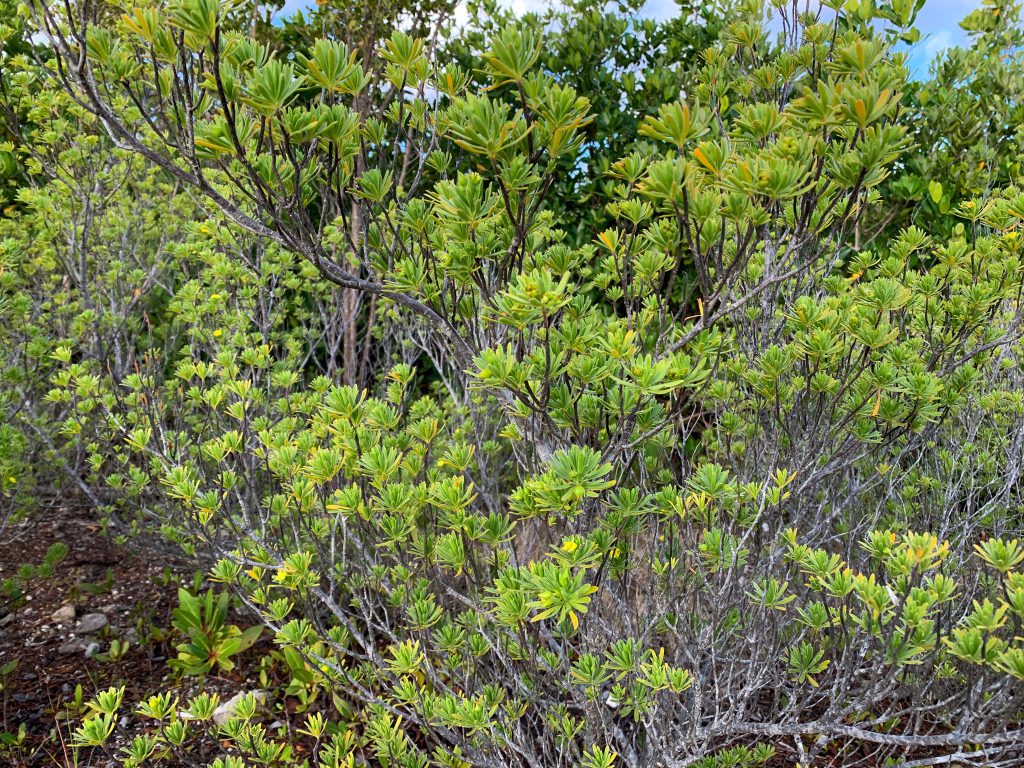Scientific name: Suriana maritima
Common names: Bay Cedar, Suriana, Seaside Bay Cedar, Shoreline Bay Cedar, Seashore Lignumvitae
Bay Cedar, with its resilient nature and ecological significance, stands as a symbol of coastal resilience and adaptation. From stabilizing sandy shores to providing habitat for wildlife, this unassuming shrub plays a vital role in maintaining the health and biodiversity of coastal ecosystems.

Bay Cedar is a coastal shrub or small tree that belongs to the family Surianaceae. Despite its common name, it is not a true cedar but is so named due to its foliage resembling that of some cedar trees. This hardy plant is well-adapted to coastal environments and is often found along sandy shores, dunes, and in mangrove habitats. Bay Cedar is valued for its ability to stabilize coastal soils and provide habitat for various wildlife species.
It typically grows as a shrub or small tree, reaching heights of up to 5 meters (16 feet). It has a spreading, irregular growth habit with multiple slender branches. The leaves are small, narrow, and leathery, with a glossy green color, resembling those of true cedar trees, hence the common name “Bay Cedar.” The plant produces small yellow flowers with five petals, followed by tiny, rounded fruits containing seeds.
Bay Cedar is native to coastal regions of the Americas, including the southeastern United States, the Caribbean islands, and parts of Central and South America. It thrives in sandy, well-drained soils and is commonly found along beaches, dunes, and in coastal scrub habitats. Due to its ability to tolerate salt spray and thrive in windy conditions, Bay Cedar is often used in coastal landscaping and restoration projects.
Ecological Importance:
Bay Cedar plays a crucial role in coastal ecosystems, providing valuable habitat and food sources for various wildlife species. Its dense foliage offers shelter for nesting birds and small mammals, while its flowers attract pollinators such as bees and butterflies. The plant’s root system helps stabilize sandy soils, preventing erosion and contributing to the formation of dunes.
Medicinal Uses:
Historically, indigenous peoples in the Caribbean and Florida used parts of the plant for medicinal purposes, including treating skin ailments and digestive issues. However, such uses are not as widespread or well-documented as those of other coastal plants.